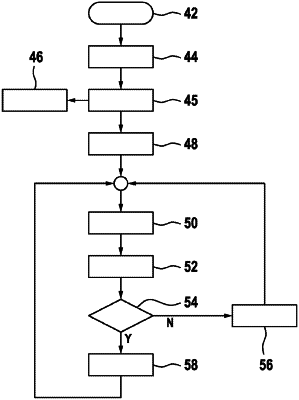| CPC B60T 7/12 (2013.01) [B60T 8/171 (2013.01); B60T 8/72 (2013.01); B60T 2201/03 (2013.01); B60T 2230/08 (2013.01); B60T 2260/02 (2013.01)] | 8 Claims |

|
1. A method for assisting a driver, in which a vehicle automatically carries out a driving maneuver, comprising:
at least partially activating a parking brake such that the parking brake is at least partially activated while the driving maneuver is being carried out such that a braking effect is at least partially constantly exerted on at least one wheel of at least one axle during the driving maneuver;
operating a drive of the vehicle counter to the at least partially activated parking brake;
detecting at least one operating parameter which is associated with an unintentional increase of the braking effect exerted on the at least one wheel;
evaluating the detected at least one operating parameter during the driving maneuver; and
reducing the braking effect on the at least one wheel based on the evaluation, wherein:
the at least one operating parameter comprises wheel rotation speeds of the at least one wheel of at least one axle;
the braking effect on a first wheel of the at least one wheel that has a lower wheel rotation speed than a second of the at least one wheel is partially reduced in response to a difference between the wheel rotation speeds of the first and second wheels exceeding a threshold value; and
the threshold value for the difference is adapted as a function of a driving direction, such that, in a vehicle with front-wheel steering, the threshold value is higher when reversing than when traveling forward.
|